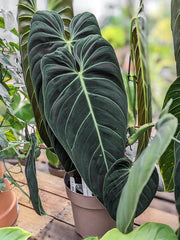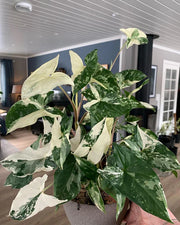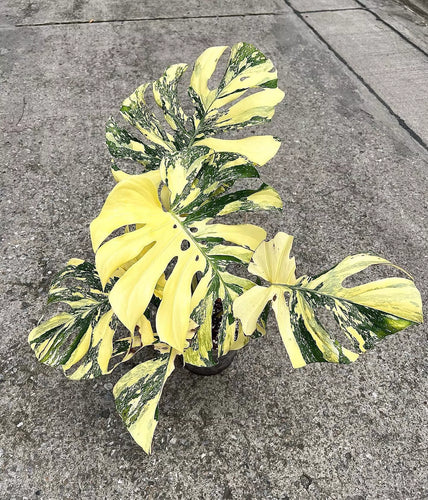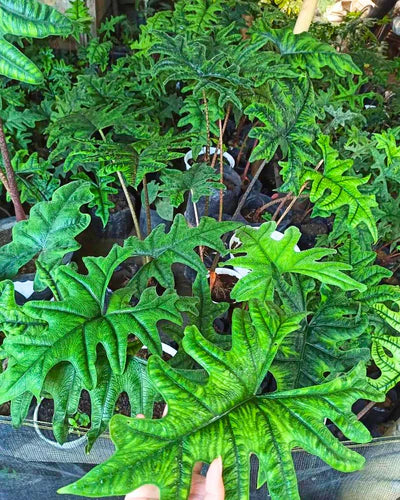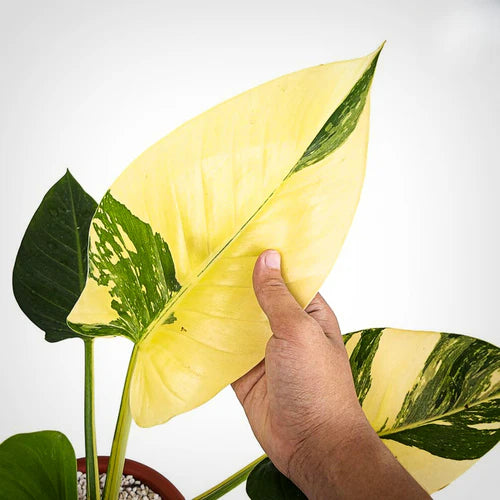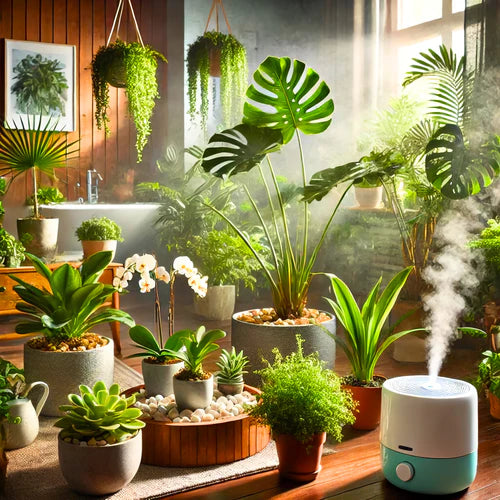What is a Good Low Maintenance Plant?
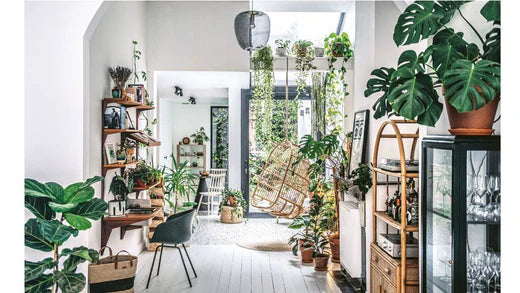
The Comprehensive Guide for Good Low Maintenance Plants:
Table of Contents
- Introduction: Embrace the Green Revolution
- What Defines a Low Maintenance Plant?
- The Benefits of Having Low Maintenance Plants
- Setting the Scene: Essential Features to Look For
- Low Maintenance vs. High Maintenance: What's the Difference?
- Top 5 Best Low Maintenance Plants for Beginners
- Shopping Tips for Low Maintenance Plants
- Soil and Potting Essentials
- Watering Techniques for Low Maintenance Plants
- Importance of Light Conditions for Plant Growth
- Fertilization and Nutrient Requirements
- Pest Management for Low Maintenance Plants
- Must-Have Tools for Plant Care
- Crafting Your Own Low Maintenance Plant Corner
- Expert Recommendations for Specific Rooms
- FAQs: Your Burning Questions Answered
Introduction: Embrace the Green Revolution
Are you captivated by the lush, vibrant world of indoor plants but feel a sense of apprehension about your ability to maintain them? Rest assured, you're not alone. The demands of modern life make it challenging to take on additional responsibilities, even if they come in the form of beautiful greenery. Fortunately, there's a thriving array of low maintenance plants that not only enhance your living spaces but also respect your busy schedule.
What Defines a Low Maintenance Plant?
When we refer to a plant as "low maintenance," we're talking about species that are resilient, adaptable, and forgiving of the occasional human error. You know, the ones that won't hold a grudge if you forget to water them for a week. Generally, these plants require less frequent watering, are tolerant of various lighting conditions, and are less susceptible to pests.
The whole point of opting for low maintenance plants is to enjoy the benefits of indoor gardening without constantly worrying about the wellbeing of your leafy friends. If you're keen on exploring a variety of plants, including tropical ones, check out this handy guide for the best tropical plants for indoors.
The Benefits of Having Low Maintenance Plants
Before we delve into the characteristics and care tips, let's look at why these low maintenance plants are worthy additions to your home:
- Mental Well-being: The act of caring for a living being, even one that doesn't demand much, can boost your mood and mental health.
- Aesthetic Value: Low maintenance doesn't mean low impact. These plants can significantly elevate the visual appeal of your interiors.
- Air Purification: Several low maintenance plants are natural air purifiers, improving indoor air quality and making your home a healthier place to live.
Setting the Scene: Essential Features to Look For
When you're in the market for low maintenance plants, keep an eye out for a few key features:
- Watering Frequency: The longer a plant can go without water, the easier it is to maintain. Look for those that can survive weeks without a drink.
- Light Tolerance: Plants that can thrive in a variety of light conditions offer you greater flexibility in placement within your home.
- Pest Resistance: You don't want to deal with creepy crawlies, so opt for plants that naturally repel pests.
If you find this process overwhelming, you can use a Moisture Meter to take the guesswork out of watering, or opt for Grow Lights to ensure your plants get the light they need without any fuss.
Low Maintenance vs. High Maintenance: What's the Difference?
Let's take a moment to distinguish between low maintenance and high maintenance plants. The latter often require specialized soil mixes like Aroid mix, specific light conditions monitored by a Light Meter, and frequent fertilization using products like Slow Release Fertilizer.
On the other hand, low maintenance plants are typically content with standard potting soil, supplemented with a bit of Perlite for drainage, and basic liquid fertilizer. They don't demand high humidity levels, but if you want to pamper them a bit, a simple Humidifier should suffice.
Top 5 Best Low Maintenance Plants for Beginners
If you're new to the world of indoor gardening, start simple. Here are five plants that promise a robust introduction to plant care:
- Snake Plant: Known for its striking vertical leaves and its ability to purify the air, the Snake Plant is almost indestructible.
- ZZ Plant: With its glossy leaves and drought tolerance, it's an ideal choice for those who might forget the watering schedule.
- Spider Plant: It thrives in a variety of lighting conditions and even produces baby plants that you can propagate easily.
- Pothos: With its charming trailing vines and heart-shaped leaves, Pothos is a robust plant that can tolerate neglect.
- Aloe Vera: This succulent not only enhances your interiors but also comes with medicinal properties.
Shopping Tips for Your Low-Maintenance Indoor Garden
Essentials for Planting
- Soil: Start with a well-draining Aroid Mix that sets a solid foundation for your plants to grow.
Create the Ideal Atmosphere
- Humidifier: Especially in winter or dry climates, a quality Humidifier can maintain that much-needed humidity.
- Moisture Meter: Say goodbye to over-watering or under-watering. Use a Moisture Meter to keep tabs on soil moisture levels.
Lights and Fertilization
- Grow Lights: Don't let those shady spots in your home stay barren. Fill them with life using effective Grow Lights.
- Light Meter: For the perfectionists who wish to provide just the right amount of light, a Light Meter will be a great help.
- Fertilizer: Feed your plants over time with a Slow-Release Fertilizer.
Pest Management Tools
- Pest Control: For those unexpected infestations, keep a bottle of Neem Oil or Insecticidal Soap on standby.
Supportive Structures
- Moss Pole: For climbing plants, a Clear Moss Pole can provide the vertical support they need.
Soil and Potting Essentials
After you've made your plant selections, it's time to focus on the potting essentials.
- Soil Type: Regular potting soil mixed with some Perlite works well for most low maintenance plants.
- Drainage: Ensure the pot has adequate drainage holes to prevent root rot.
- Repotting: While not frequent, some plants will benefit from being repotted once a year.
For those keen on experimenting, Leca is an alternative growing medium that's perfect for people who travel frequently.
Watering Techniques for Low Maintenance Plants
Consistent watering doesn't mean frequent watering. Low maintenance plants prefer their soil to dry out a bit between waterings. For a more precise approach, a Moisture Meter can come in handy.
- Tap Water vs. Filtered Water: While tap water is generally acceptable, sensitive plants might prefer filtered or distilled water.
- Bottom Watering: This technique helps the plant absorb only the water it needs, minimizing waste.
- Overwatering: This is the most common mistake; when in doubt, it's better to underwater.
Importance of Light Conditions for Plant Growth
The term 'low maintenance' doesn't mean 'no light.' Plants like the ZZ plant or Snake plant are tolerant of low light conditions, but a Grow Light can supplement their needs, especially during the darker winter months.
- Natural Light: If possible, place your plants near windows with filtered light.
- Artificial Light: In absence of natural light, artificial sources can do the job just fine.
- Rotating Plants: To ensure even growth, consider rotating your plants every month.
Fertilization: Less is More
Believe it or not, over-fertilization is a common mistake made by enthusiastic plant owners. A good rule of thumb for most low-maintenance plants is to fertilize only during the growing season. A Slow Release Fertilizer can be an excellent choice for beginners, providing nutrients over an extended period.
- Organic vs. Chemical: Both have their pros and cons, but organic fertilizers are often gentler and slower-acting, making it harder to overdo it.
- Frequency: Depending on the plant, you may need to fertilize monthly or bi-monthly.
- Fertilization Signs: Yellow leaves or stunted growth can be signs that your plant needs a nutrient boost.
The ABCs of Pest Management
Low maintenance doesn't mean these plants are immune to pests. Preventive measures are always better than curative ones.
- Insecticidal Soaps: These are mild solutions and can help control aphids, spider mites, and other soft-bodied pests. Insecticidal Soap is an easy go-to option.
- Neem Oil: An organic way to control pests. Neem Oil can be sprayed directly on the foliage.
- Systemic Insecticides: These are absorbed by the plants and can provide longer-lasting protection. Bonide Systemic Houseplant Insect Control is a reliable choice.
Must-Have Tools for Easy Plant Care
If you’re serious about maintaining a vibrant indoor garden with minimal fuss, investing in some basic tools can go a long way.
- Moisture Meter: Takes the guesswork out of watering.
- Humidifier: Maintains optimal humidity levels, especially in winter. A Humidifier can be particularly useful for tropical plants.
- Light Meter: This helps you gauge the light levels your plants are actually receiving. Light Meter is an advanced but valuable tool.
Good Low Maintenance Plants - Frequently Asked Questions
What indoor plant is low maintenance?
The Snake Plant is an excellent example of a low maintenance indoor plant. It can tolerate a range of lighting conditions and infrequent watering.
What is a small low maintenance plant?
The Jade Plant is a small, hardy succulent that requires minimal care. It’s a great choice for small spaces.
What plants can you leave for a month?
ZZ Plants and Cacti can generally be left alone for up to a month without requiring water.
What is the easiest plant to grow and take care of?
The Pothos is arguably the easiest plant to grow and care for. It's forgiving of low light and inconsistent watering.
Final Thoughts: The Joy of Low Maintenance Plants
Low maintenance plants offer the best of both worlds — the joy of gardening without the constant upkeep. Whether you’re a seasoned gardener or just starting out, low-maintenance plants are a foolproof way to enhance your living space. If you're looking to expand your collection, consider exploring the world of tropical plants for indoors.
Enjoy your journey into the lush, stress-free world of low maintenance plants! :D
